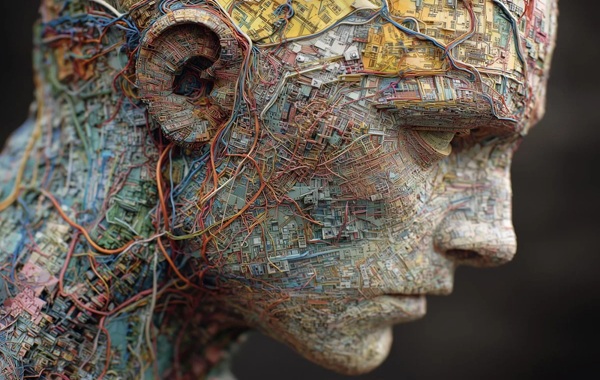Your Brain’s Secret Trick: Rewriting Reality Without You Noticing
Stop trusting your eyes. You might believe you are seeing the world like a high-end camera recording raw, objective footage, but a mind-bending new study from MIT suggests you are actually watching a heavily edited livestream.
For decades, scientists thought the visual cortex was just a passive screen receiving data. But new research published in Neuron reveals that your brain’s “executive center”—the Prefrontal Cortex (PFC)—is constantly interfering with the signal. It turns out, your brain doesn’t just record reality; it curates it, physically altering what you see based on your mood, your stress levels, and even your body movements.
Here is the deep dive into how your internal “video editor” manipulates your world:
The “Director” is Micromanaging You
The study shows that the Prefrontal Cortex isn’t just sending general commands; it is sending highly specific, customized signals to different parts of the brain. Think of it like a film director who doesn’t just shout “Action!” but whispers specific instructions to every cameraman. The researchers found that depending on whether you are calm, panicked, or running, your brain activates entirely different neural circuits to change how visual data is processed.
The Tale of Two Editors: The Sharpener and The Censor
The MIT team identified two specific “sub-regions” that act as aggressive photo editors for your vision. They balance each other out in a constant tug-of-war:
The Sharpener (Anterior Cingulate Area): When you are alert or mildly excited, this region kicks into high gear. It sends signals to the visual cortex to boost contrast and clarify details. It turns up the “HD” settings on your vision, helping you spot threats or opportunities.
The Censor (Orbitofrontal Cortex): When your stress or arousal levels get too high (think: total panic), this region steps in. It suppresses background noise and blurs out distractions. It essentially gives you “tunnel vision” to prevent your brain from crashing due to information overload.
Movement Rewires Your Sight
Perhaps the most radical finding is that movement physically changes how you see. The study found that the neural pathways used when a subject is stationary are different from those used when moving. When the mice in the experiment began to run, the brain didn’t just process the scenery faster; it switched to a different mode of visual encoding entirely. This implies that the reality you perceive while sitting on your couch is neurologically different from the reality you perceive while jogging.
Why Does Your Brain Do This?
It comes down to survival. Evolution doesn’t care about “HD accuracy”; it cares about keeping you alive. If you are being chased by a predator, you don’t need to see the beautiful texture of the grass (The Censor blocks this); you only need to see the escape route (The Sharpener highlights this). Your brain willingly sacrifices the “truth” for utility.
“Seeing is believing” is a biological myth. What you experience as “the real world” is merely a prediction—a constantly updated, filtered, and edited version of reality that your brain has decided is most useful for you right now. You aren’t seeing the world as it is; you are seeing the world as you are.
Source: SciTechDaily
When Your Eyes Feel the Touch: The Hidden Neural Magic Behind Seeing Someone Else Touched
Your Brain’s Secret Trick: Rewriting Reality Without You Noticing

